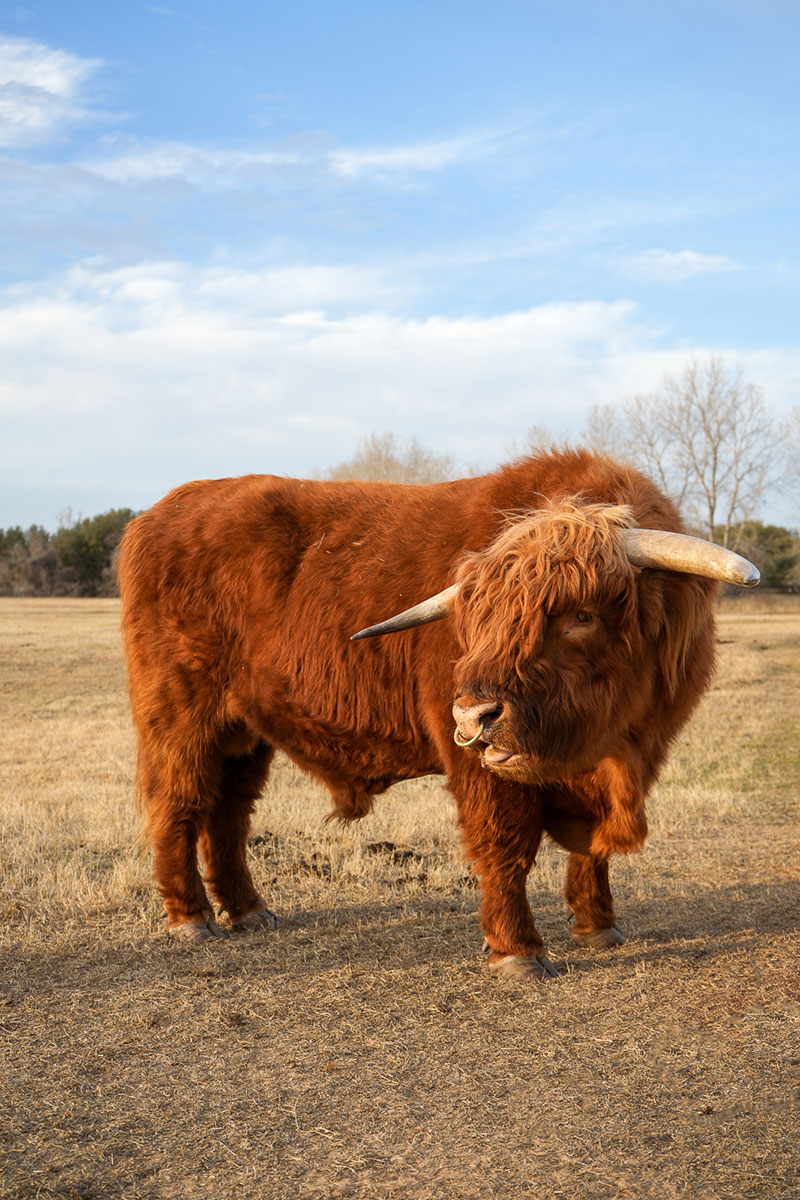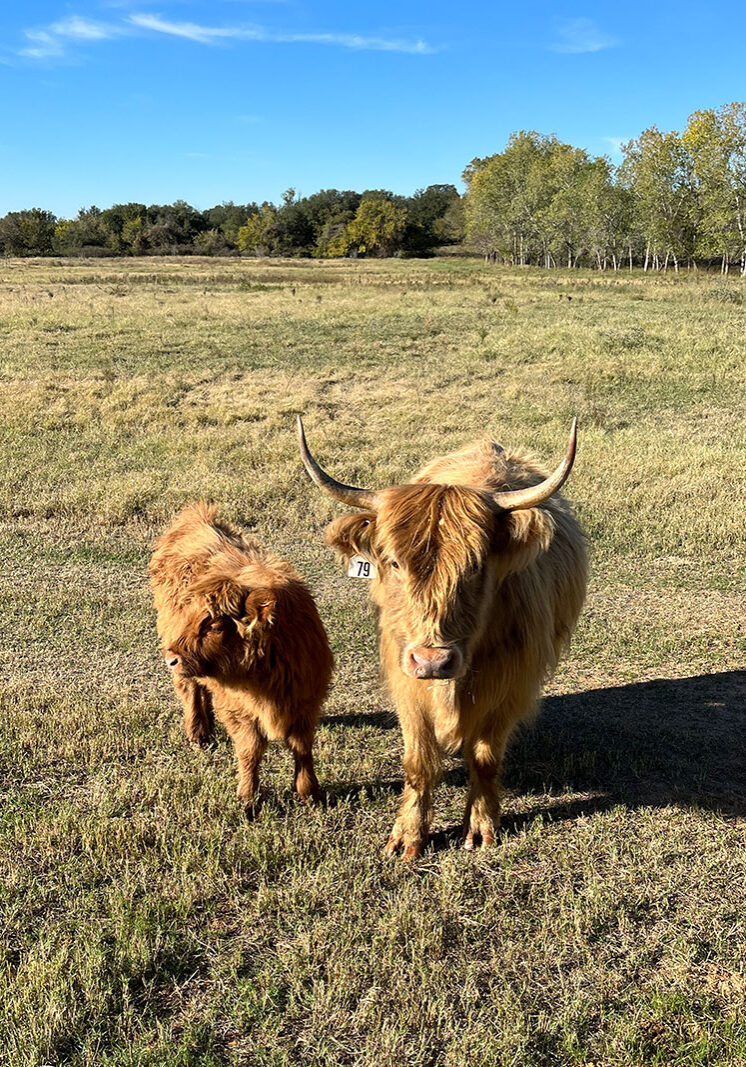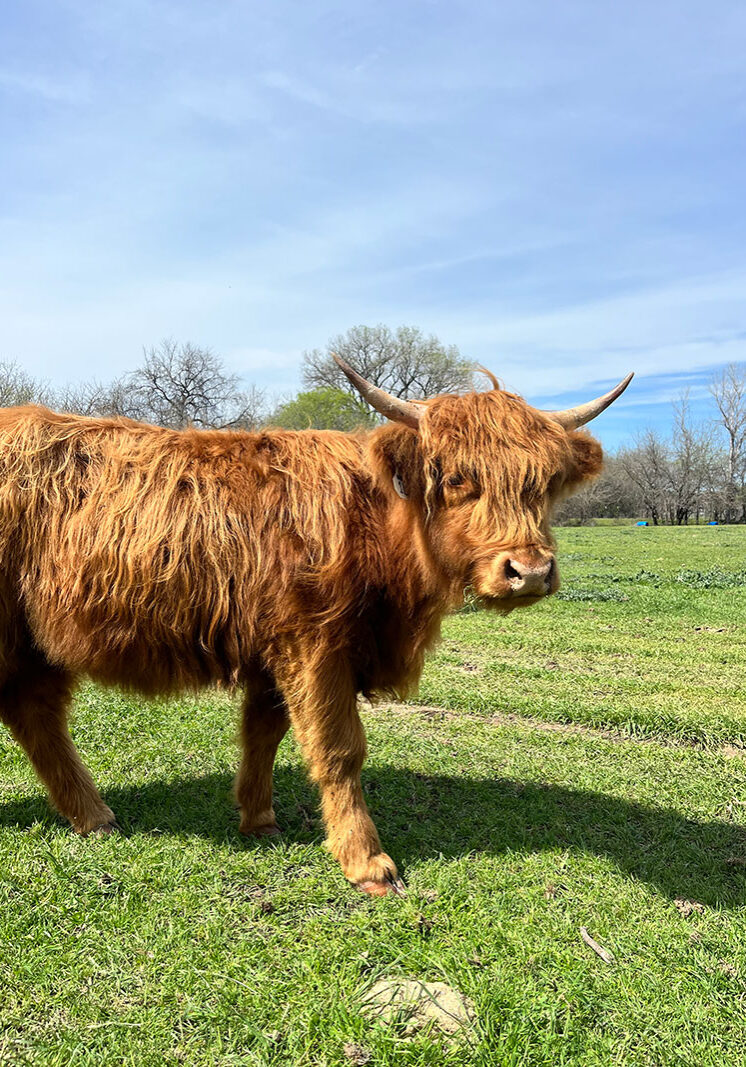SCOTTISH HIGHLAND
CATTLE
Scottish Highland cattle, often simply called Highland cattle, are a unique and iconic breed known for their long horns, shaggy coats, and gentle demeanor. Originating from the rugged landscapes of Scotland, these animals possess a range of special attributes and benefits that make them a valuable addition to farming practices and a beloved choice for livestock enthusiasts.

The Benefits and Attributes of Scottish Highland Cattle
- Adaptability to Harsh Climates
One of the most remarkable features of Highland cattle is their adaptability. They are well-suited to harsh weather conditions, thanks to their thick, double-layered coat, which insulates them from cold, wind, and rain. This natural protection allows them to thrive in mountainous and challenging terrains where other breeds might struggle, making them ideal for sustainable farming in less hospitable areas. - Low Maintenance Requirements
Highland cattle are known for their hardiness and resilience, requiring less intensive care compared to other cattle breeds. Their ability to graze on rougher forage and their low susceptibility to many common cattle diseases contribute to lower veterinary costs and management efforts. This makes them an appealing choice for farmers looking to maintain a more sustainable and low-input farming operation. - Gentle Temperament
These animals are often praised for their calm and docile nature. Highland cattle tend to be friendly and manageable, making them suitable for farms with families or for those who are new to cattle farming. Their gentle temperament allows for easier handling and a more pleasant interaction with humans, which can enhance the overall farming experience. - Efficient Grazers
Highland cattle are efficient foragers and are particularly adept at converting lower-quality forage into high-quality beef. They excel in grazing environments that may not support other livestock, helping to maintain healthy pastures and prevent overgrowth. Their unique grazing habits contribute to biodiversity and ecological balance in their habitats. - High-Quality Beef
The beef produced by Highland cattle is renowned for its exceptional quality. Known for being lean yet tender, Highland beef has a rich flavor and is often sought after by gourmet chefs and health-conscious consumers. The breed's slower growth rate allows for marbling that enhances flavor without the excessive fat found in some other breeds. - Aesthetic and Cultural Value
Highland cattle are visually striking, with their long horns and flowing coats, making them a favorite among photographers and tourists. Their presence adds charm and character to the landscapes they inhabit. Additionally, they hold cultural significance in Scotland, symbolizing the country’s agricultural heritage and traditional farming practices. - Conservation Grazing
In recent years, Highland cattle have become increasingly popular for conservation grazing. Their grazing habits can help manage scrub and invasive plant species, promoting biodiversity in sensitive ecosystems. This makes them an excellent choice for landowners interested in environmental stewardship and sustainable land management.
Conclusion
Scottish Highland cattle are more than just a beautiful breed; they offer a multitude of benefits that align well with modern sustainable farming practices. Their adaptability, low maintenance needs, gentle temperament, and high-quality beef make them an attractive choice for both traditional farmers and new entrants to the industry. As the demand for sustainable and ethically raised livestock grows, Highland cattle are poised to play a significant role in the future of agriculture, all while enchanting those who encounter them with their unique presence.

HEALTH TESTED
NORTH TEXAS




